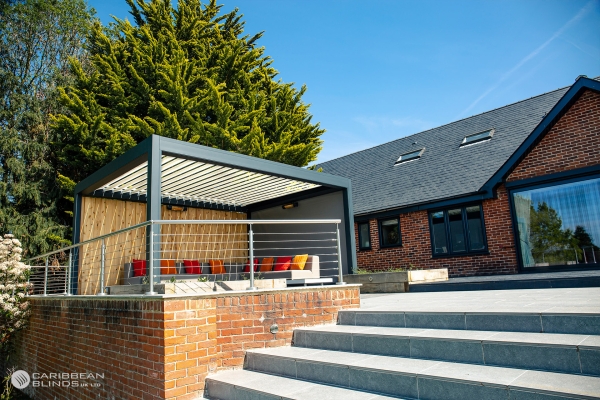Patio awnings are fast becoming the external shading product of choice within many residential properties as they provide a quick, easy and affordable solution to transform any outdoor space. Both practical and stylish, awnings offer instant shade and shelter and can be designed and built to a bespoke brief.
With travel restrictions still very much up in the air, outdoor living is certain to remain in full swing this summer as much of the UK will continue to ‘holiday at home’. Here are five things to be aware of when choosing a patio awning, taking into consideration fabrics, operation and installation.
Is it fully waterproof?
All patio awnings will get wet (especially with the unpredictable British weather) however, it’s how you look after your awning that will determine how it performs and lasts. Continuous and consistent use of a patio awning in rain showers will affect the look and appearance of the awning fabric, so leaving a wet awning to fully dry out before retracting away will help minimise any rippling or waviness in the material. In persistent rain showers where this is not possible and the fabric has to be rolled away while it’s still damp, it’s essential that the awning be opened up at the soonest opportunity to allow it to breathe and properly dry out.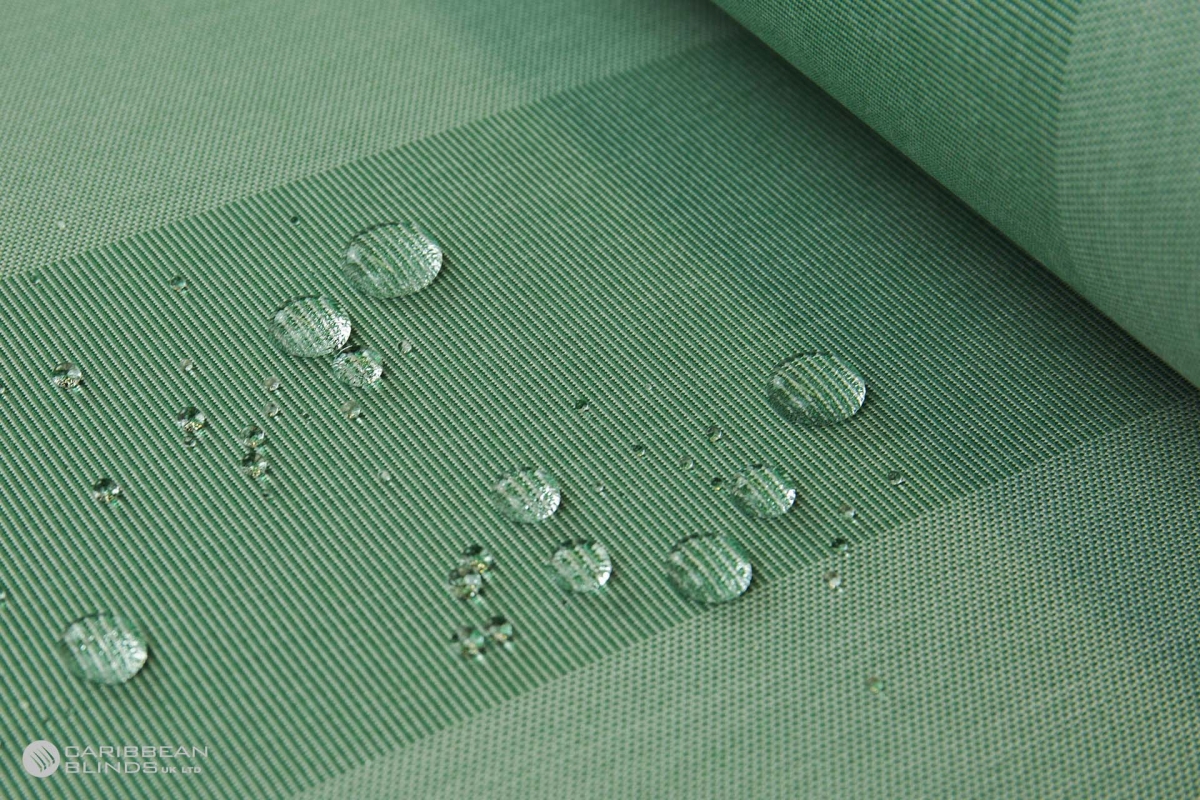 Choosing a premium fabric that incorporates a self-clean effect coating such as TEXGard® will help deter dirt and most importantly water from the surface of your awning, preventing the growth of mould and algae. This combined with a 14-degree pitch (or greater) on the awning will ensure rainwater will run off and not ‘pool’ on the material, effectively providing shelter from rain showers and with the additional benefit of reduced surface dirt and debris.
Choosing a premium fabric that incorporates a self-clean effect coating such as TEXGard® will help deter dirt and most importantly water from the surface of your awning, preventing the growth of mould and algae. This combined with a 14-degree pitch (or greater) on the awning will ensure rainwater will run off and not ‘pool’ on the material, effectively providing shelter from rain showers and with the additional benefit of reduced surface dirt and debris.
Will it withstand strong winds?
If extreme weather is predicted, it’s important for your awning to be fully retracted beforehand, as attempting to do this during high winds can cause serious damage to both the awning, the property and the user. If the fabric is flapping around and the mechanism is flexing, this is another sign that the awning should be rolled away. Awnings with cable tensioned folding arms will offer the highest wind resistance, withstanding wind speeds of up to 30mph. They will also help keep the fabric taut even in exposed locations where gusts and breezes can be much stronger.
Awnings with cable tensioned folding arms will offer the highest wind resistance, withstanding wind speeds of up to 30mph. They will also help keep the fabric taut even in exposed locations where gusts and breezes can be much stronger.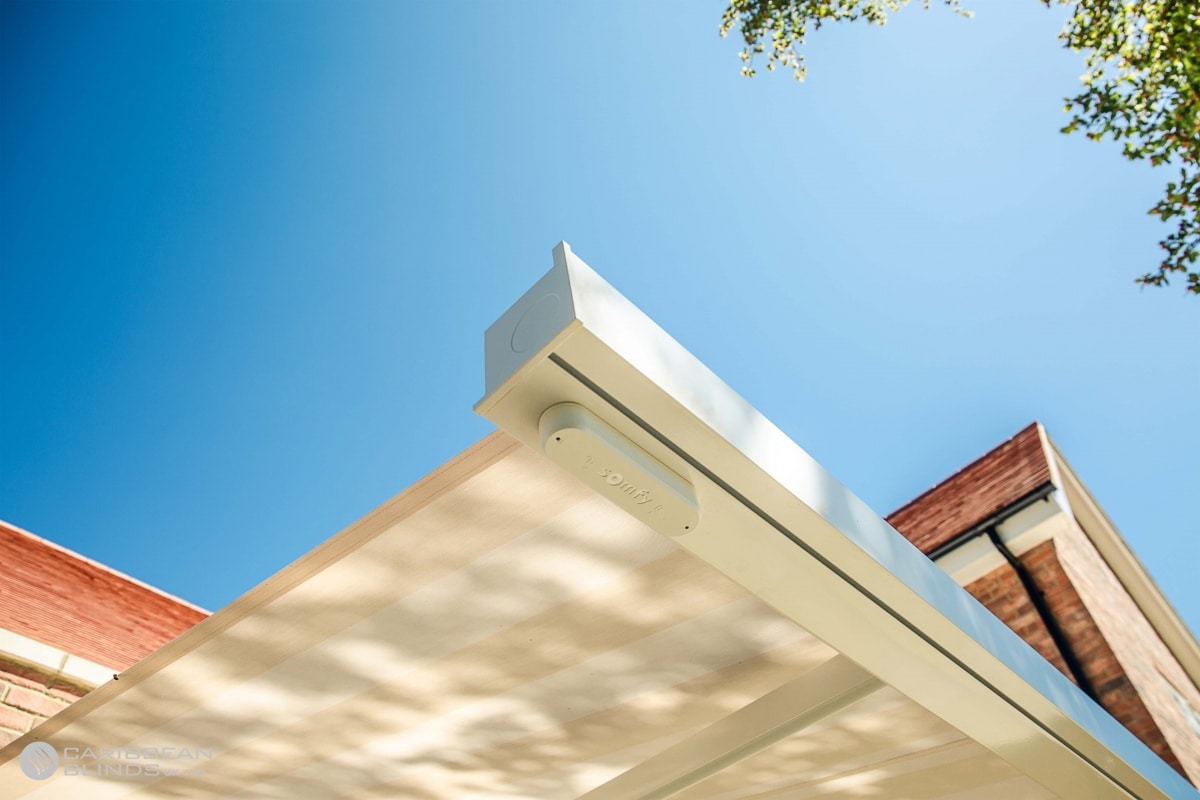 If you’ve opted for an electric awning, you can choose to add wind sensors that will detect the wind speed and automatically retract an awning should strong winds exceed safe levels. Whilst these sensors are not a fail-safe device, they do offer additional protection and peace of mind and are therefore highly recommended to protect both your patio awning and property.
If you’ve opted for an electric awning, you can choose to add wind sensors that will detect the wind speed and automatically retract an awning should strong winds exceed safe levels. Whilst these sensors are not a fail-safe device, they do offer additional protection and peace of mind and are therefore highly recommended to protect both your patio awning and property.
Is planning permission required?
In the majority of cases, planning permission is not required for a patio awning as they are not considered a permanent structure (like an extension). However, if you live in a conservation, green belt or area of outstanding natural beauty, you will most likely need to obtain permission. It is always recommended to contact your local planning authority to check whether permission is required, as the rules can vary.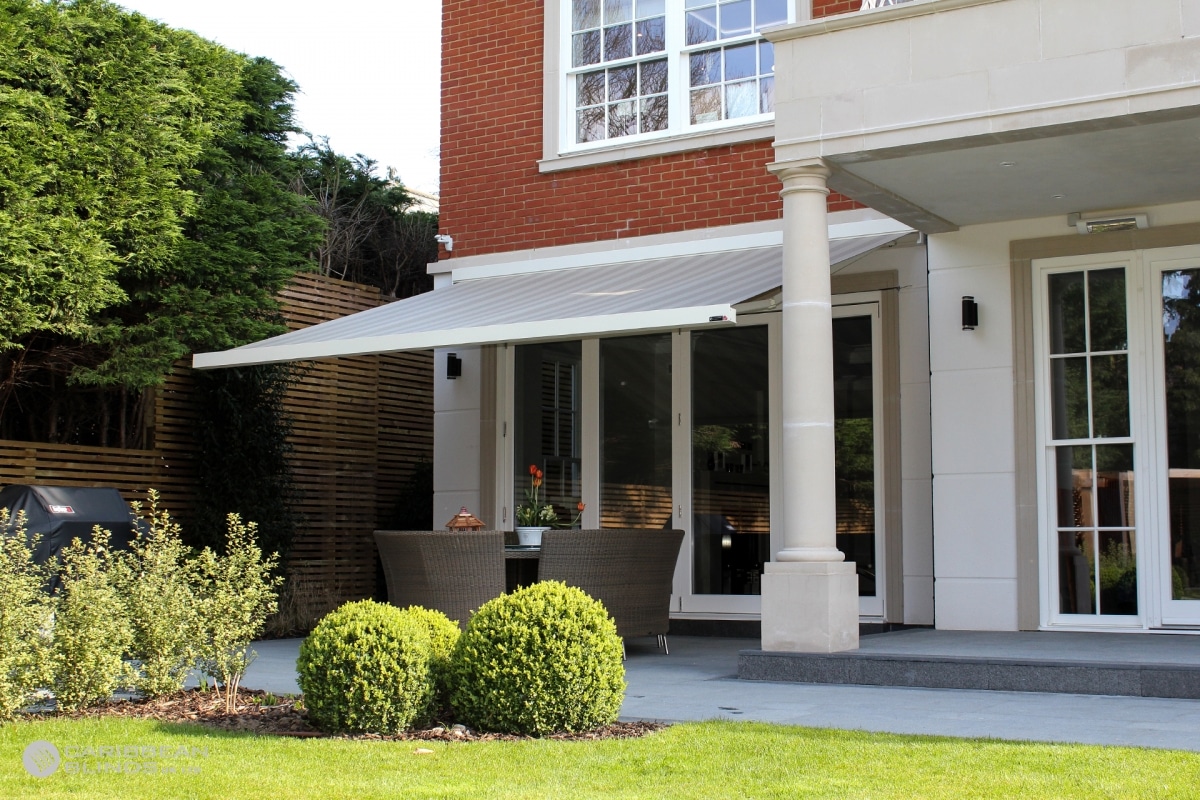 The width and depth of a patio awning are vital to how it will perform, so when deciding on the size of your awning you will need to consider a number of factors including any obstructions (trees, fences and pipes/guttering), the position of the sun when it sets and rises (as this will determine appropriate levels of sun protection) and whether the space will be used primarily for outdoor dining. For a small dining table, a projection of 2.5m is adequate, however, for a larger family or for those who like to entertain, a minimum projection of 3m is required.
The width and depth of a patio awning are vital to how it will perform, so when deciding on the size of your awning you will need to consider a number of factors including any obstructions (trees, fences and pipes/guttering), the position of the sun when it sets and rises (as this will determine appropriate levels of sun protection) and whether the space will be used primarily for outdoor dining. For a small dining table, a projection of 2.5m is adequate, however, for a larger family or for those who like to entertain, a minimum projection of 3m is required.
How easy is it to use?
Patio awnings are widely considered to be more versatile than other external shading systems including gazebos and parasols due to their ease of use, as well as the adequate shelter, privacy and instant style they add to any property.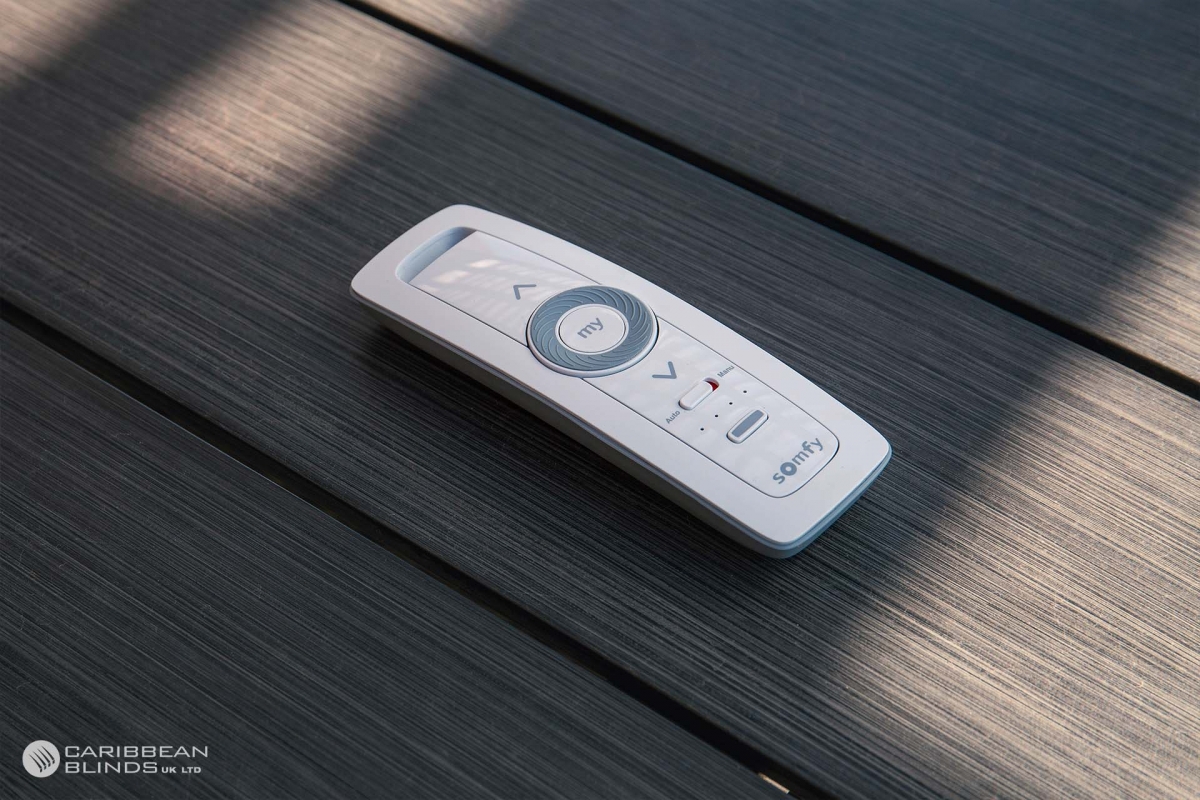 A motorised awning will allow you to extend and retract at just the touch of a button, with any add-ons such as lighting and heating operated from the same hand-held remote. The latest bi-directional motors offer even more control, enabling you to view the exact position of the awning via an app on your smartphone and adjust it to suit your needs.
A motorised awning will allow you to extend and retract at just the touch of a button, with any add-ons such as lighting and heating operated from the same hand-held remote. The latest bi-directional motors offer even more control, enabling you to view the exact position of the awning via an app on your smartphone and adjust it to suit your needs.
How long will it take to install?
A professional and expert installation is just as important as the quality of the awning itself. Bespoke awnings are made to measure with specific brackets and fixings to suit the property in which they are being installed – whether that be a two-storey house or single storey façade such as a bungalow or extension – with the installation period ranging from less than half a day to a full day.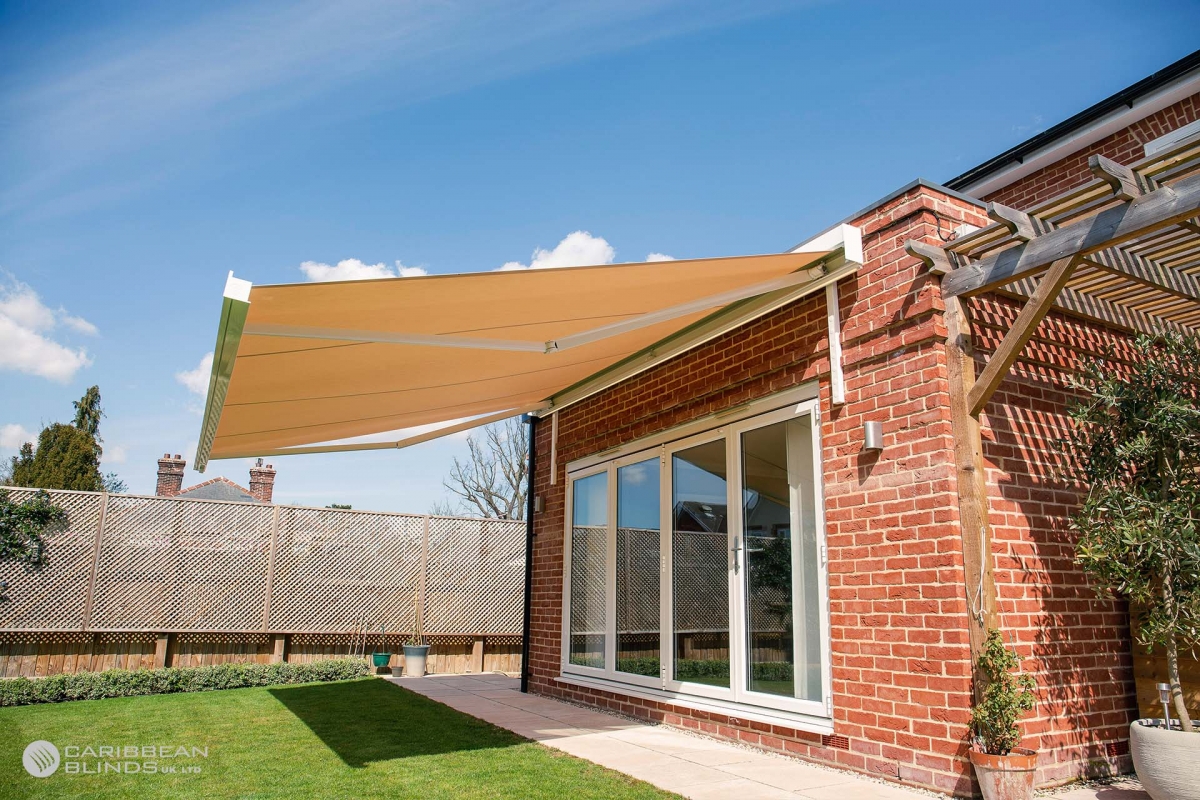 Attention to detail is key, so finishing touches such as concealed fixing brackets and colour co-ordinated stitching on the fabric along a full cassette casing that offers protection from harsh weather when the awning is not in use, will ensure an elegant installation that provides exemplary cover and fully transforms your outdoor space.
Attention to detail is key, so finishing touches such as concealed fixing brackets and colour co-ordinated stitching on the fabric along a full cassette casing that offers protection from harsh weather when the awning is not in use, will ensure an elegant installation that provides exemplary cover and fully transforms your outdoor space.
If you’ve found this article useful why not visit our knowledge hub which is packed full of FAQs covering everything to consider when choosing a patio awning and supplier.



